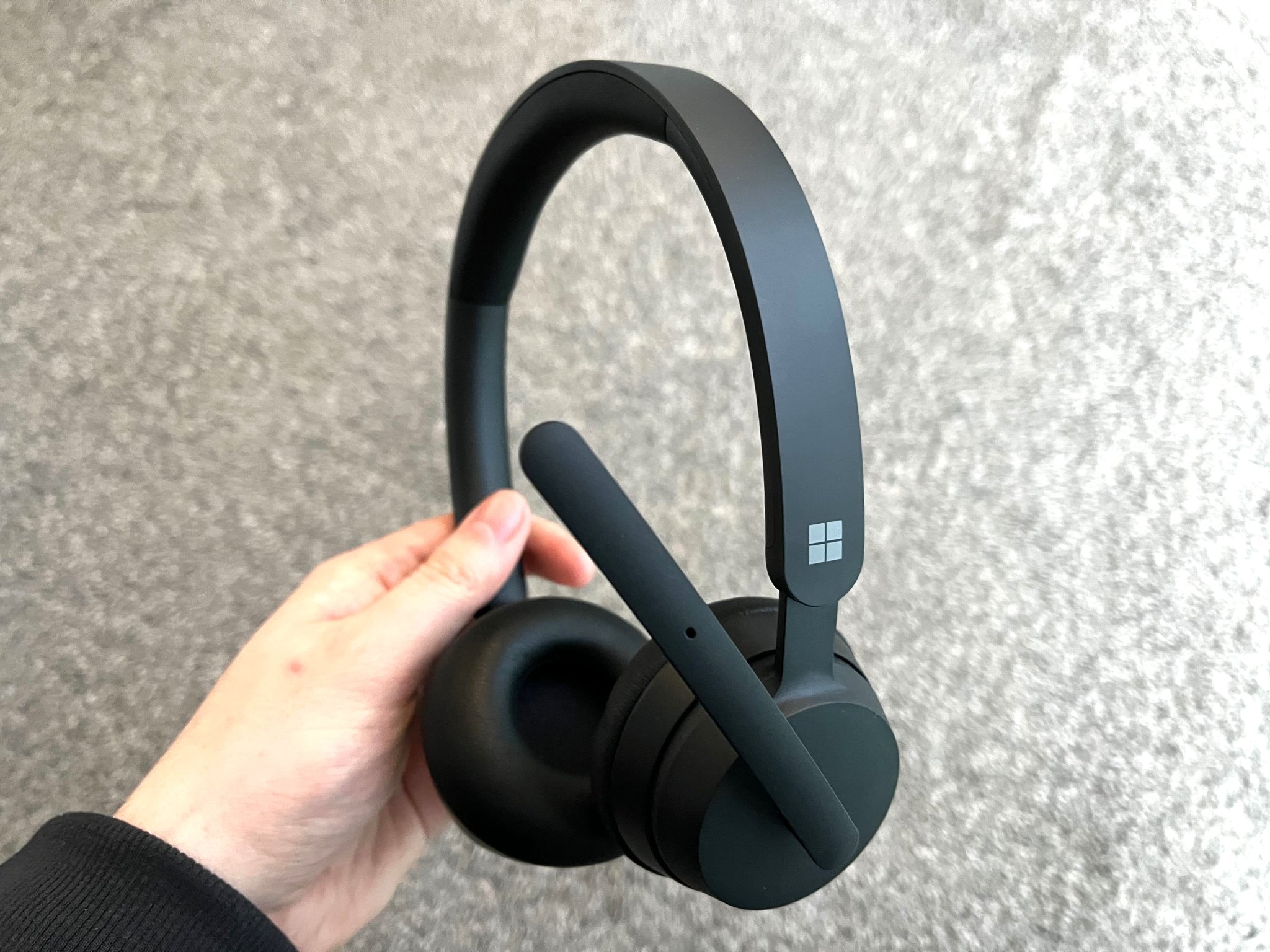Microsoft is now shipping a handful of "Teams Certified" PC accessories, designed primarily for those who often find themselves in conference calls using Microsoft Teams in their day-to-day work lives. Whether you're at an office or working from home, these accessories are designed to enhance your productivity when communicating with colleagues or clients with Teams.
Today, we're reviewing two of those new accessories in the form of the Modern USB-C Headset and Modern Bluetooth Headset. Both of these headsets are pretty much the same bar a few minor differences that we'll get in to. So without further ado, here's our review of Microsoft's Teams Certified Modern Headsets.
Be sure to check out our list of best conferencing headsets!
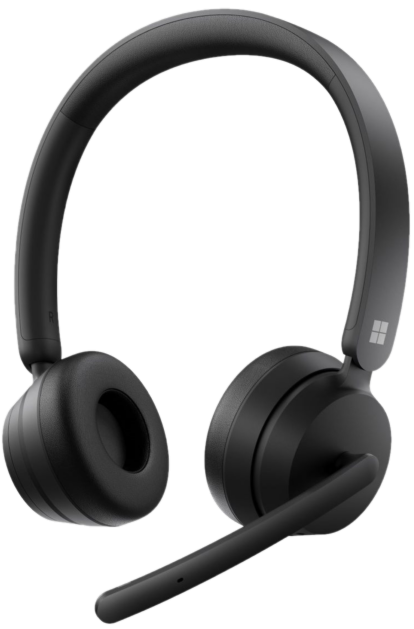
Bottom line: The Microsoft Modern Bluetooth and USB-C headsets are great, affordable ways into enhancing your conferencing gear, with dedicated Teams buttons and easy to use controls.
For
- Comfortable design
- Easy setup
- Dedicated call and Teams buttons
Against
- Accessories app needs more options
- Teams button not configurable
| Category | Modern Wireless Headset | Modern USB-C Headset |
|---|---|---|
| Dimensions | Length: 6.77 inches (172mm)Width: 6.46 inches (164mm)Depth: 2.36 inches (60mm) | Length: 6.81 inches (173mm)Width: 6.57 inches (167mm)Depth: 2.36 inches (60mm) |
| Weight | 0.30 pounds (136g) | 0.31 pounds (142g) |
| Frequency response | Microphone: 100Hz-10KHzSpeaker: 100Hz-20KHz | Microphone: 100Hz-10KHzSpeaker: 100Hz-20KHz |
| Noise reduction | Beamforming with 2 mems microphone | Noise reduction mic boom |
| Speaker | 28mm moving-coil speaker driver | 28mm moving-coil speaker driver |
| Sound pressure level | Up to 91dB | Up to 91dB |
| Battery | 50 hours music30 hours calling | N/A |
| Range | 10 meters (office)30 meters (air) | N/A |
| Cord length | N/A | 39.4 inches |
| Cable length | N/A | 29.5 inches |
| Compatibility | Windows 11Windows 10Windows 8.xWindows 7macOSAndroidiOS | Windows 11Windows 10Windows 8.xmacOS 10.15+ |
| Price | $99.99 | $54.99 |
Modern Headsets: Price and availability
Both the Microsoft Modern Bluetooth Headset and Microsoft Modern USB-C Headset are available on the Microsoft Store. The Bluetooth headset can be had for $99, whereas the wired USB-C headset is available for a cheaper price of $55.
Modern Headsets: What you'll like
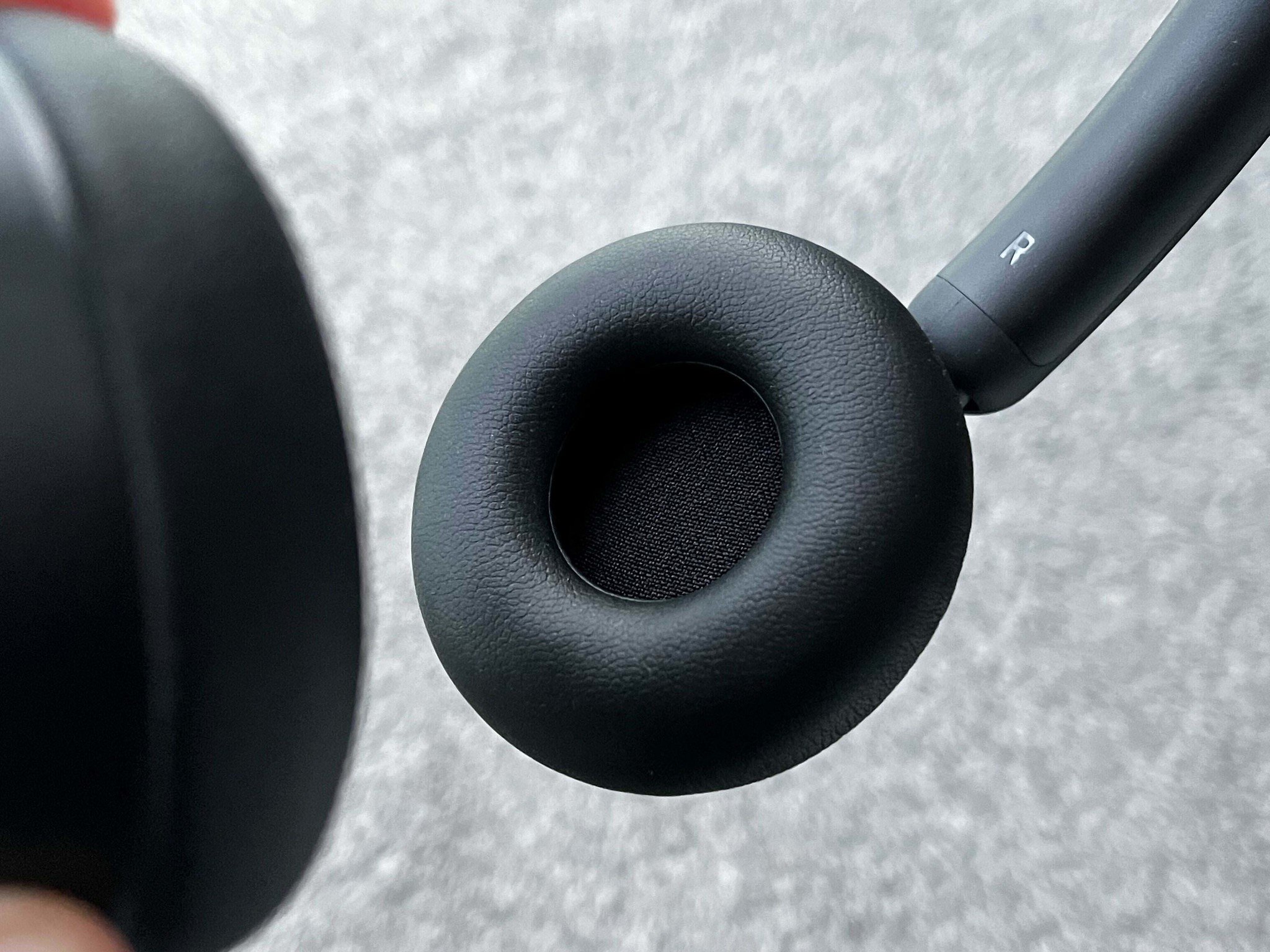
Both headsets feature the same lightweight design. They feature two 28mm speaker drivers which sound plenty fine for Teams calls and voice-related activity. I wouldn't use these for extensive music or movie listening however, as these speakers just aren't designed for that and are noticeably lacking in bass for that reason.
The speakers themselves have a little bit of padding around them which keeps your ears nice and comfortable for prolonged use. The speakers huge which means the padding sits on your ears rather than over them. This has the advantage of still letting in some external noise, which could be useful if you need to listen out for colleagues in an open office environment.
Both headsets feature "noise reduction" built into the microphone which attempts to reduce standard office background noise when in a conference call. In my brief testing, it works well enough for minimizing light background chatter or the sound of a fan or air conditioner, but it won't work miracles.
Microphone quality between the two does differ quite a bit. The wired headset has much clearer and slightly richer sound compared to the wireless headset, which sounds quite tinny, like the mic you'd find on a regular pair of Bluetooth headphones. So, if you're looking for the best microphone quality between the two, I'd go for the wired headset. That dedicated wired connection just allows for a higher quality microphone sound.
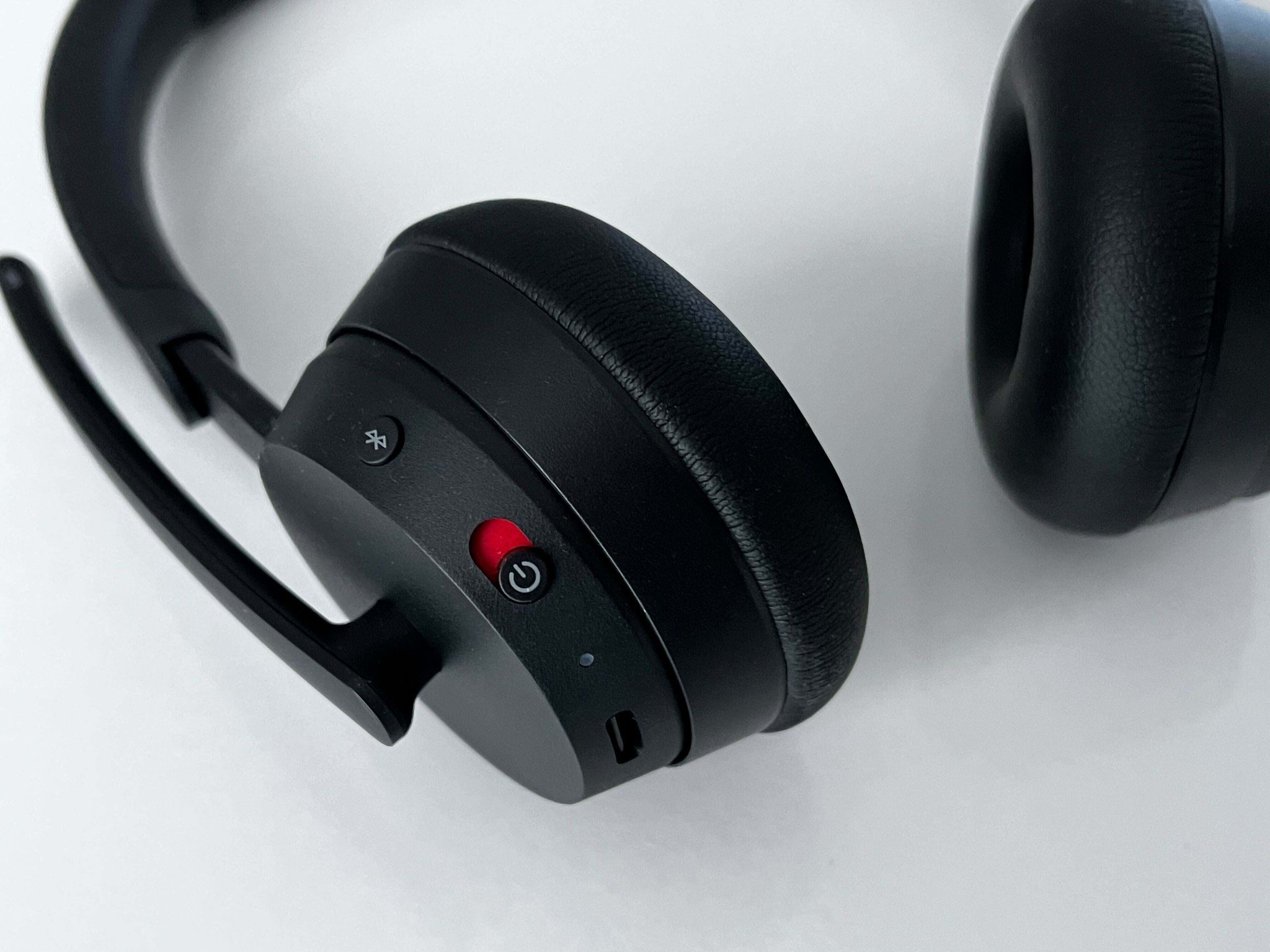
Another difference between the two headsets is with how you mute the mic. On the wireless headset, you can mute the mic just by raising it up from the mouth position. On the wired headset, you must press the mute button on the control pad attached to the wire. I really like the wireless headsets way of muting, as it's one motion that takes a second and doesn't require hunting around for the control pad first.
Both headsets feature an easily adjustable design and are comfortable to wear. The Wireless model can connect to your PC either via the included 2.4Ghz USB-A dongle, or via Bluetooth. I love that Microsoft gives you the option, as sometimes you aren't able to plug in a dedicated receiver. That said, I recommend using the receiver whenever you can, as it provides a much stronger and more stable connection between your headset and PC.
The wired headphones connect to your PC using USB-C, which is unusual for a conferencing headset. Most conferencing headsets on the market still use USB-A, so it's nice to see Microsoft ahead of the curve here. That said, a lot of office-based PCs don't have USB-C ports yet, so you might find yourself digging for a dongle.
Microphone quality test
Here are two brief audio tests using the default settings on both headsets. These audio clips are unaltered.
Modern Headsets: What you won't like
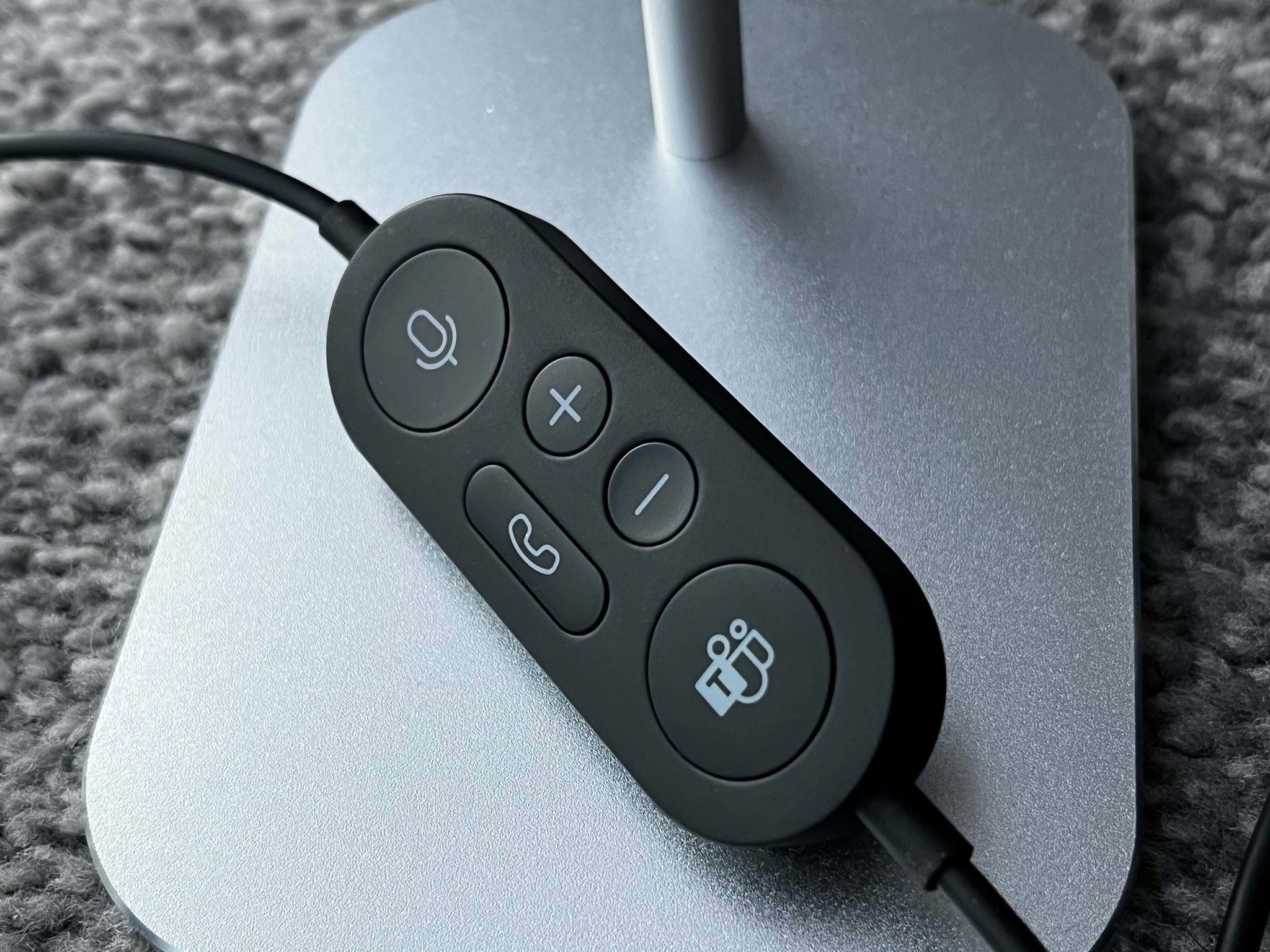
There's really not much to dislike about these headsets if you're buying them for their intended purpose. While great for voice and conference calls, they're less good for movie or music listening. The speakers are lacking in the bass department, so things aren't as punchy compared to a higher-end set of headphones for entertainment listening. The mics also lack punch, so audio recordings will be noticeably lacking in bass too. This is perfectly fine for voice calls and conferencing, but I wouldn't narrate an audiobook with these mics.
Both headsets have dedicated Teams buttons, which is great if you find yourself quickly needing to quickly launch into the Microsoft Teams app during the day to answer a call or message. However, if you use a different chatting service (like Slack,) the button isn't configurable in any way. It opens Teams, and that's it. I do wish Microsoft would give us the option to remap the button.
Both Headsets can be configured with Microsoft's new "Accessory Center" software, which automatically downloads when you plug in one of these peripherals for the first time. It's a nice-looking app, and works as intended, but there aren't very many options to configure for the headsets themselves. You can change language, enable or disable push to talk, and set a maximum volume limit. That's about it. I would've liked to see more controls for things like adjusting gain, tweaking EQ settings, and other audio-related features.
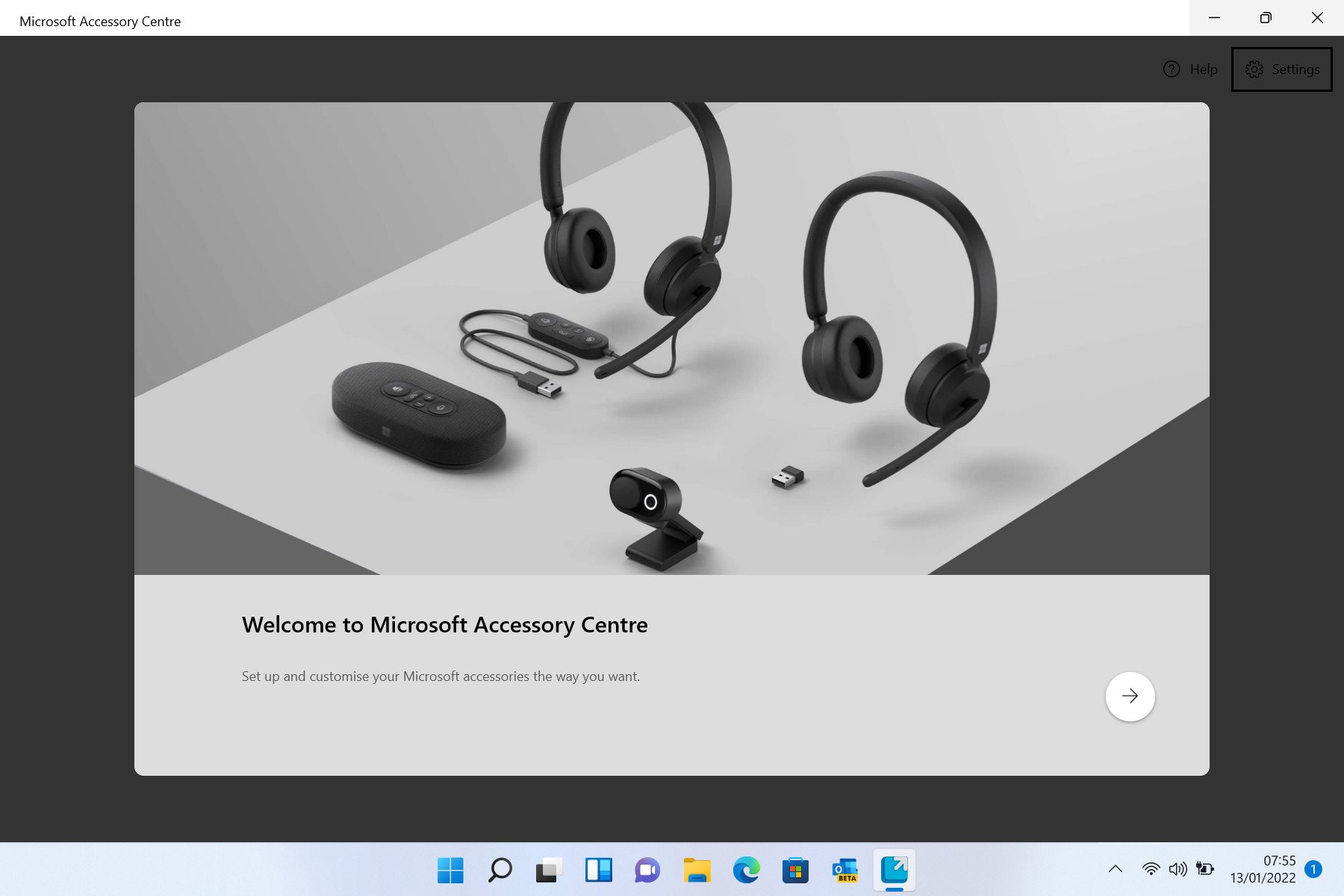
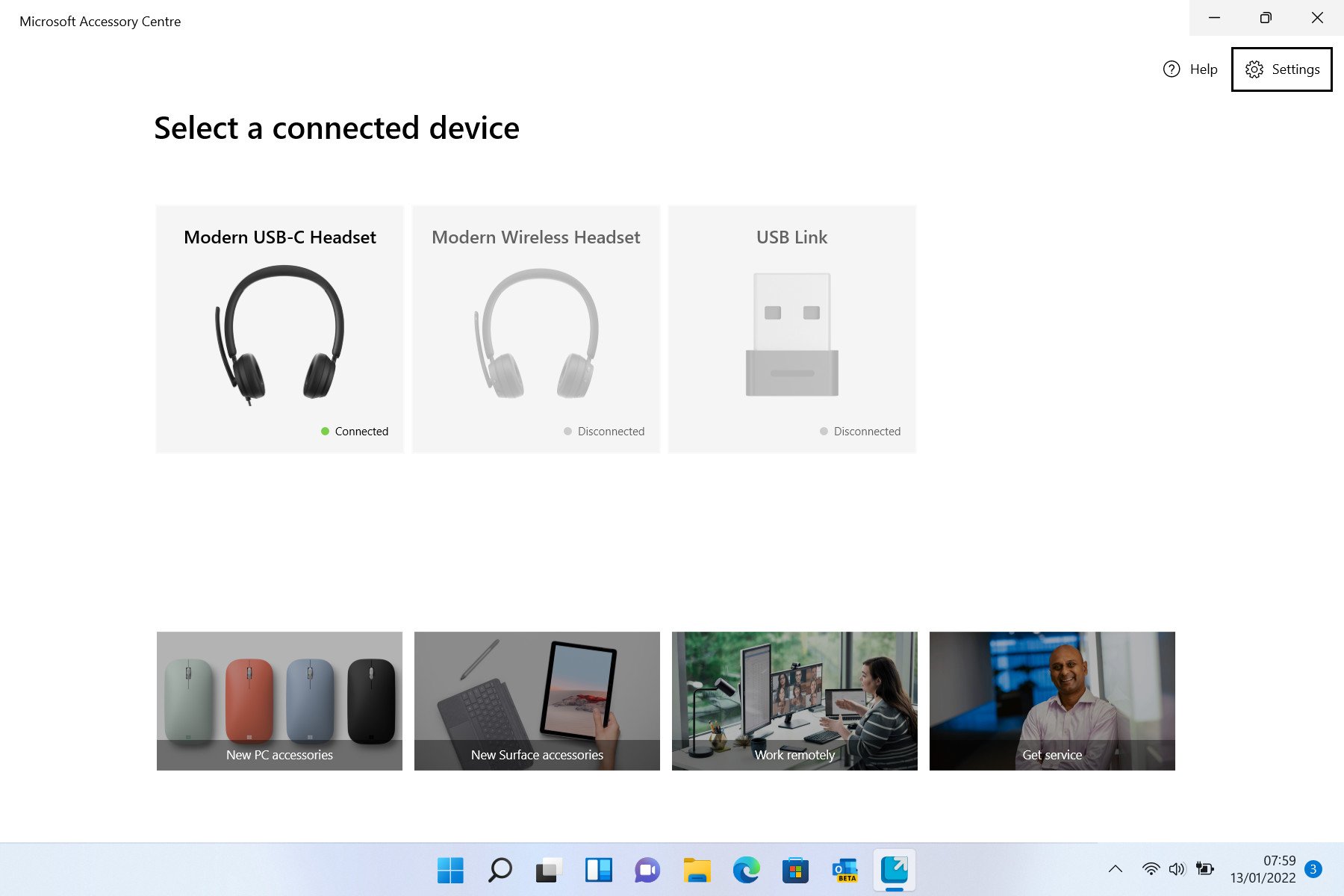
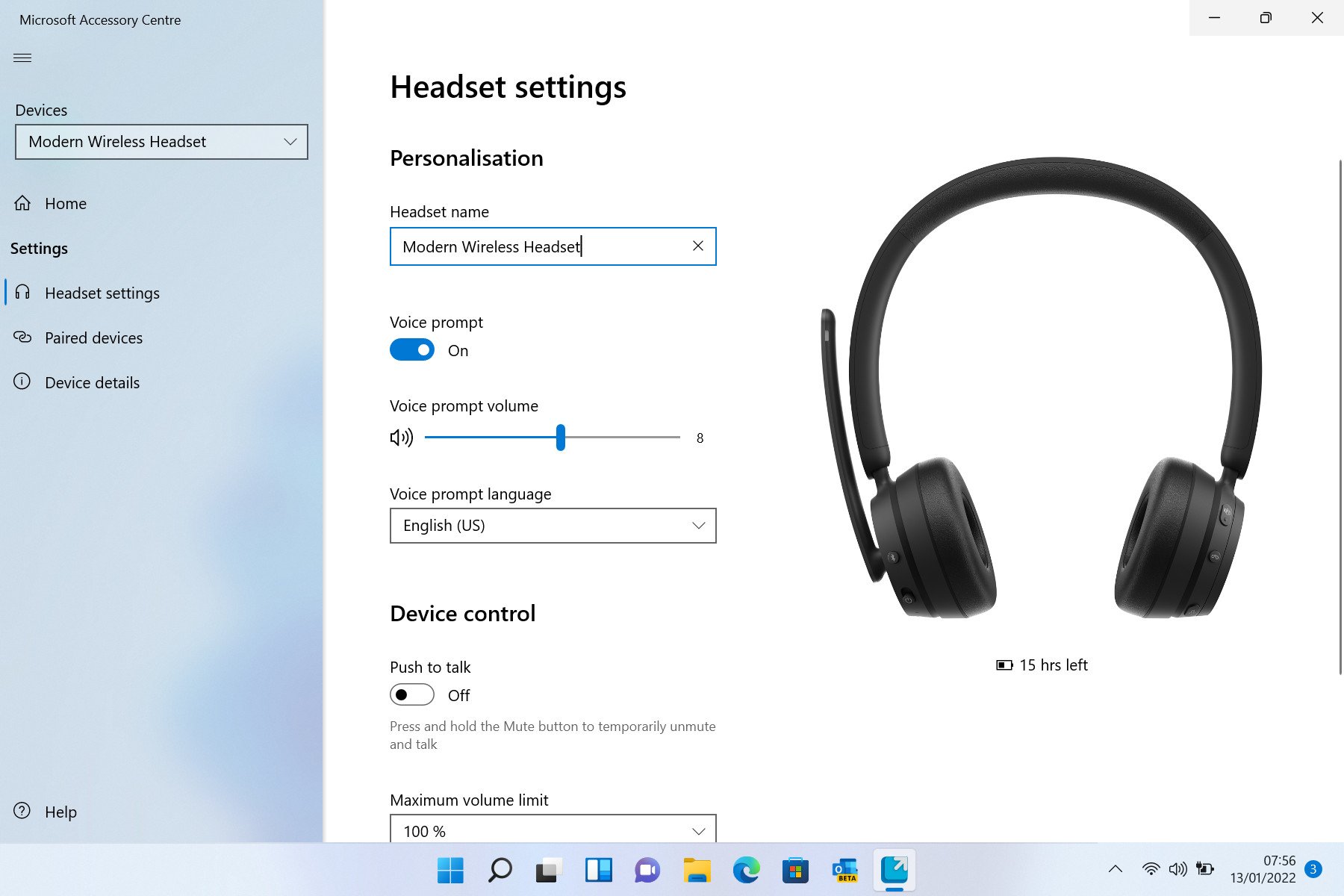
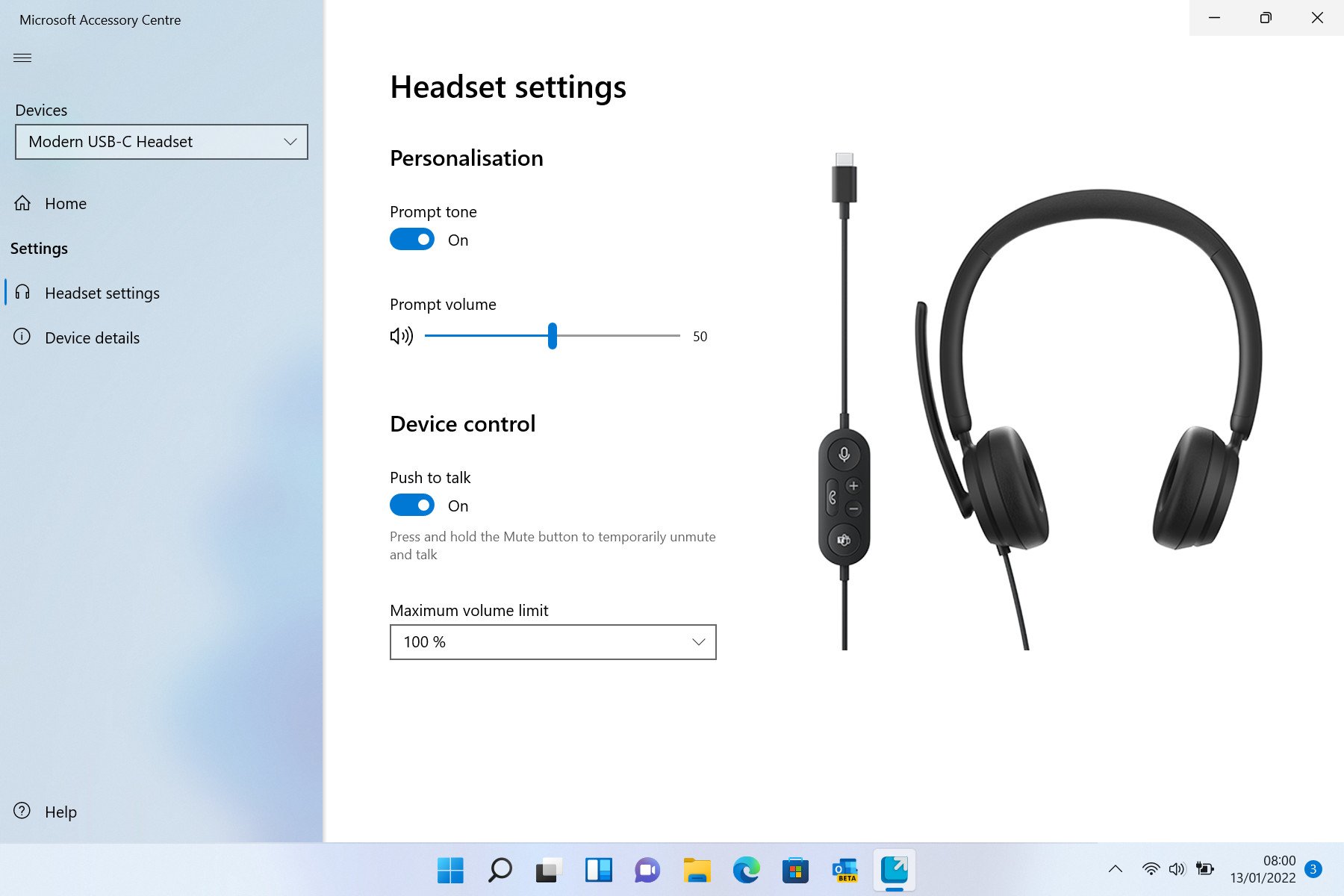
As mentioned above, mic quality differs quite a bit between the two headsets. The wired headset has a much richer sounding microphone, but there's also a slight amount of buzzing that you can hear when you're not talking. It's only really noticeable when you boost the audio, so you shouldn't notice it in conference calls, but it's something to keep an eye on. I also found the wireless headsets mic to sometimes sound a bit sharp. Moving the mic a bit further from your mouth remedies this.
Lastly, though you really shouldn't be expecting it on a device like this, there's no active noise cancellation built into these headphones. So, if you're in an environment where noises like that can distract you, these headsets aren't going to be for you. Microsoft sells the Surface Headphones 2+ with active noise cancellation, but those are quite a bit more expensive.
Modern Headsets: Competition

The conferencing headset is market is huge, with all kinds of headsets from the likes of Sennheiser, Plantronics, and Jabra. The Sennheiser MB 660 UC are considered the gold standard, albeit quite a bit more expensive than the Microsoft Modern Headsets. The MB 660 features clear microphones, large earcups that go over your ear, and much bigger drivers for better sound quality.
What's more comparable to the Modern Headsets is the Jabra Evolve 40 MS, which is priced round the same, and features similar specs. It has noise cancellation, a good microphone, and in-line controls for things like volume, muting, and accepting or declining calls.
Modern Headsets: Should you buy them?
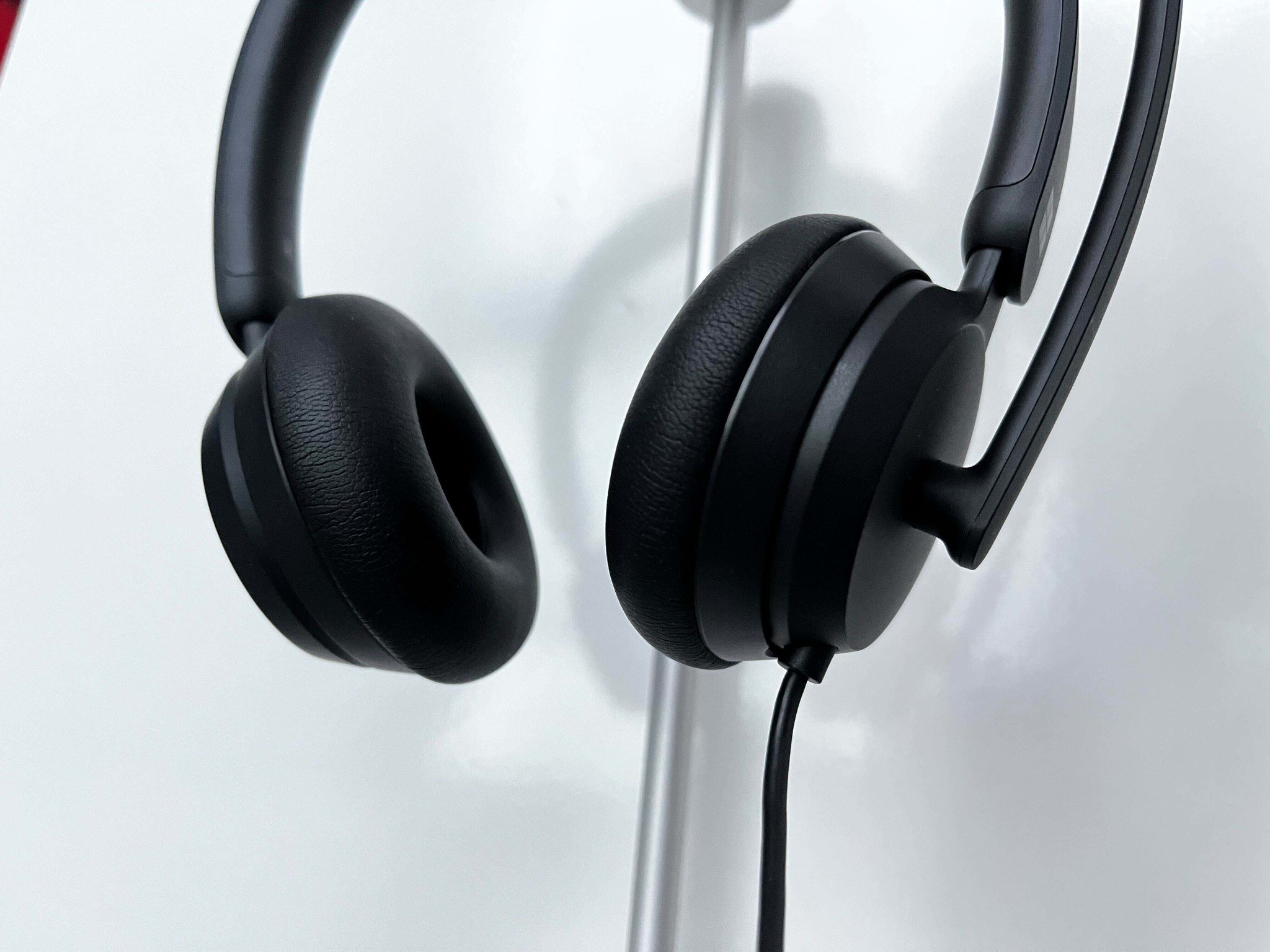
You should buy this if ...
- You live in Microsoft Teams all day
- Need an affordable, plug and play solution
- Want a wireless headset for a reasonable price
You shouldn't buy this if ...
- You plan to do heavy music or video listening
- You plan to record professional audio
I think these Modern Headsets from Microsoft are a great addition to Microsoft's accessory line-up, and serve a specific purpose (that being Teams conferencing.) You can use them in other apps, but the dedicated Teams button obviously won't do anything at that point.
Setup is surprisingly easy, just plug them in and you're basically good to go. I think for the price, these do the job just fine. Audio quality and listening quality are just fine for conferencing calls, nobody complained about my audio, even with the Bluetooth headset, and people on the other end sounded perfectly fine.

